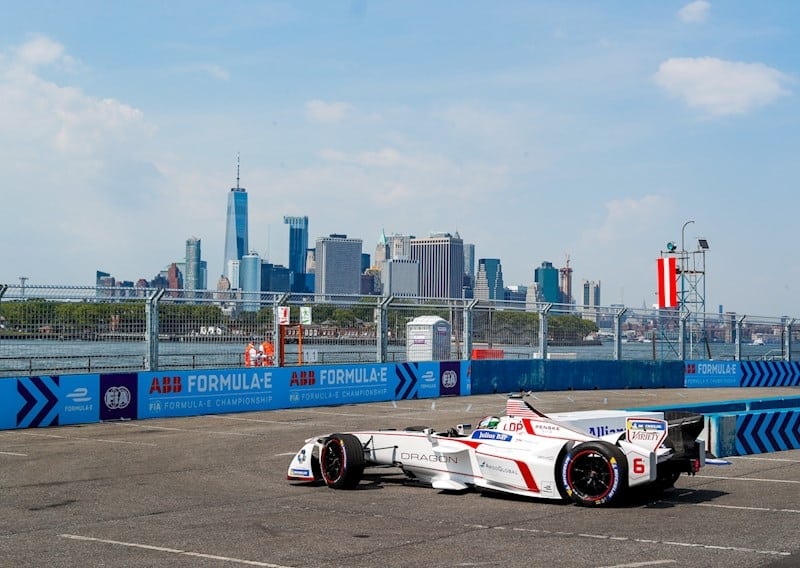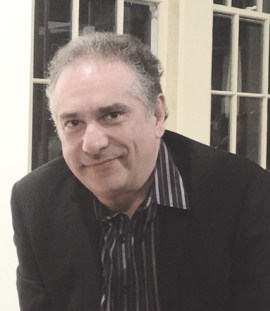When Formula E racing began five years ago, no one knew how internationally popular it’d become, let alone if it would be successful on the circuit.
“We started from a blank page and electric racing [didn’t exist] at the time. So, we had to discover it and try to do something that was suitable for everyone,” Spark Racing Technology Commercial and Development Director Pierre-Alain Michot said at a roundtable discussion during NYC ePrix weekend. “We had a high level of technology [and] when you come from a combust engine to an electric engine, you need to adapt your way of thinking a little bit and the technology around it to make it efficient.”
“For the first car we didn’t know where we were running, what was the plan for the car, what the race format [would be]. In the end we didn’t know if it would be ok to drive or if the driver would use it,” he continued.
Spark Racing Technology is a company dedicated to the creation and assembly of cars participating in the Federation Internationale de l’Automobile (FIA) World Championship Formula E. Spark learned a lot about building and adapting the car with modifications so that teams would have something reliable to work with and depend on. The electric cars used in the first four seasons – known as Gen1 cars – had 200 kW of power that lasted 25 minutes and weighed 320 kg. The amount of energy that could be delivered to the motor by the battery was 28 kWh.
The company knew coming into this season that the race format would be different, as the drivers would have to race for 45 minutes straight plus one lap, compared to having a lap limit in years past. Michot noted that this made a big difference. This year the Gen2 car, which will be used until Season 7, has 250 kW of power that lasts the full race and weighs 385 kg. The amount of energy that could be delivered to the motor by the battery is limited to 54 kWh, as permanently monitored by the FIA. This enabled the teams and drivers to mainly complete a full race at higher speeds, without having to swap cars mid-race.
“There is always discussion between the drivers and the engineers to make sure they use the good level of energy, to make sure they will reach the end of the race,” Michot said. “It happened this year, unfortunately with miscalculation, that [the drivers] didn’t finish the race, so the engineering team behind them is really important and working all the races to adapt and to be sure the person … can use the last tenths of seconds to be ahead of the other guy.”
When asked if the Gen3 cars’ batteries will be twice as powerful or efficient as they are now, Michot said it was difficult to say.
“It’s always a balance between autonomy and power because, if we keep increasing the power, [then] we can keep increasing the autonomy,” he said. “But maybe we can double up the autonomy in two or three years.”
“For the race format, do we need it? Do we need more power?” he posed rhetorically.
In terms of where the e-vehicle industry will be five or 10 years down the road, both Michot and Modis North America President Ger Doyle agreed that it’ll become more prevalent.
“Everyone is developing his/her own electric capabilities,” Michot explained. “Formula E is here to see that it’s possible. People are feeling that now we can do a lot more with electric cars, and all the other elements are growing, as well, with ability. We need new talent to be sure that we are able to properly grow on the electrical side of e-mobility.”
“Right now, if you look at Europe, a lot of the automotive industry is growing and actually a lot of the people who work for them are trying to rescale them into the electrical side. And we’re seeing that here in the U.S. as well,” Doyle added. “This is a mega trend and will continue to be for quite a while, for sure.”
Author
-

George Fiala has worked in radio, newspapers and direct marketing his whole life, except for when he was a vendor at Shea Stadium, pizza and cheesesteak maker in Lancaster, PA, and an occasional comic book dealer. He studied English and drinking in college, international relations at the New School, and in his spare time plays drums and fixes pinball machines.
View all posts
George Fiala has worked in radio, newspapers and direct marketing his whole life, except for when he was a vendor at Shea Stadium, pizza and cheesesteak maker in Lancaster, PA, and an occasional comic book dealer. He studied English and drinking in college, international relations at the New School, and in his spare time plays drums and fixes pinball machines.











One Comment
Pingback: What made this year’s Formula E car different this year, plus what’s to come – Electric Vehicle Batteries